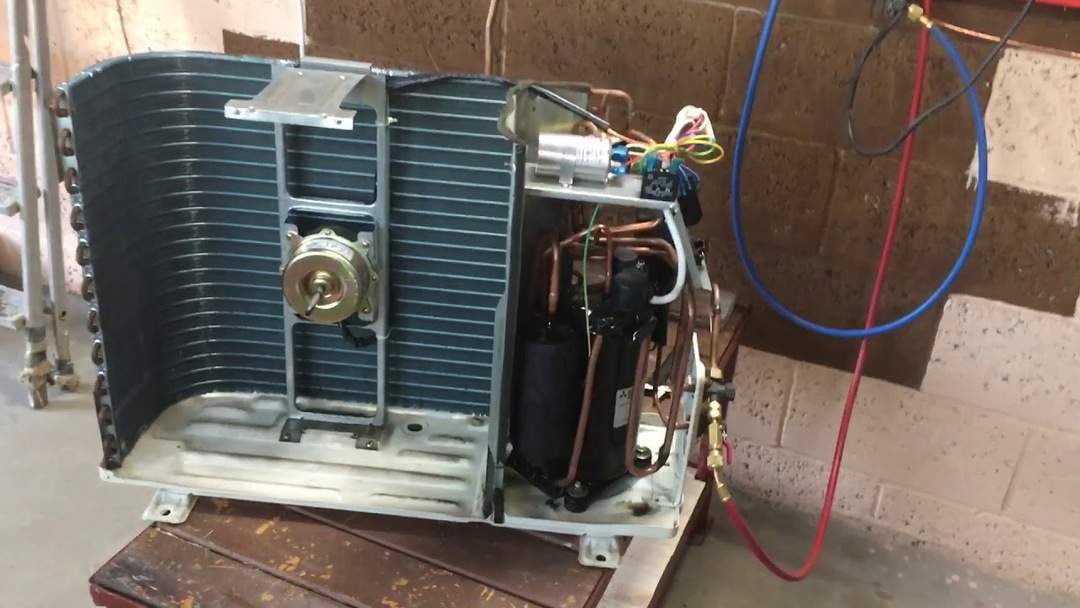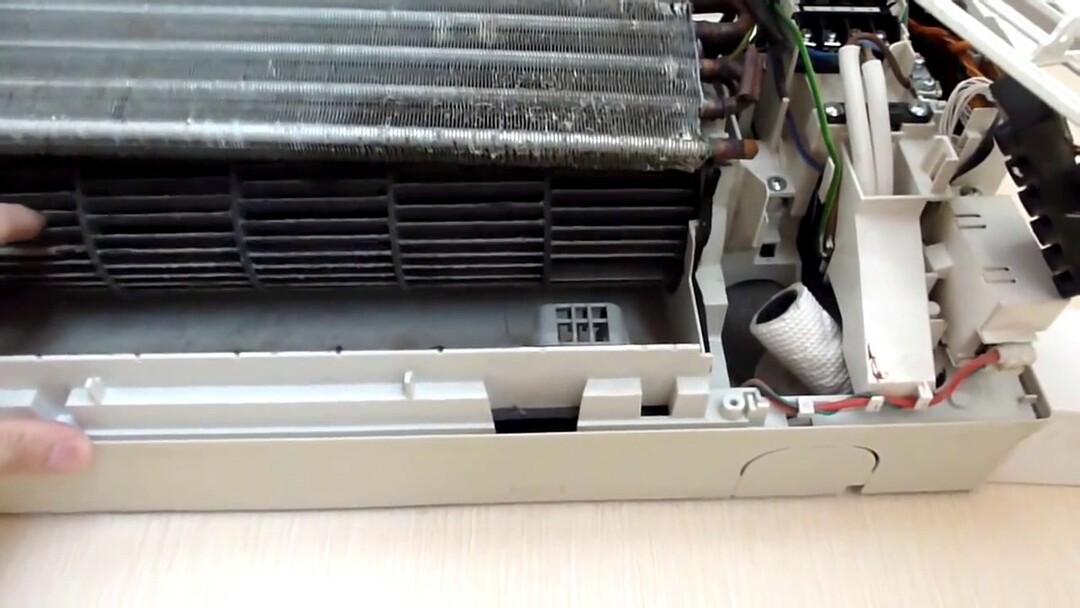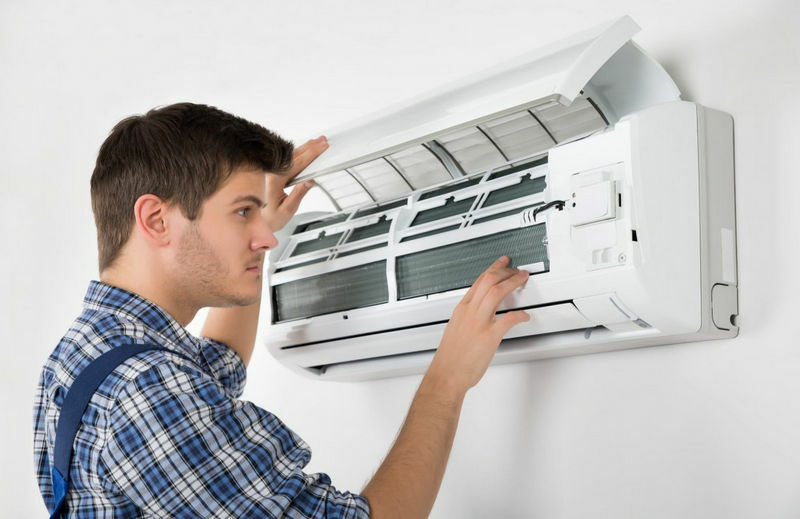Everyone who tried to solve the problem of air cooling in a house or apartment has at least a rough idea of what a split system is. This air conditioning option has confidently supplanted the ancient “windows” and has remained popular for many years.
Understanding the features of the split-system will allow you to select the appropriate model and properly organize its operation.
In this material, we will discuss the structure and working principles of split systems, as well as we will tell about the intricacies of installation, which should be followed in order for the equipment to last for many years.
The content of the article:
- The essence of the work and the principle of action
- Split system device
- Types, types, additional functions
- What you need to know about inverter models?
- Air conditioning with heat pump
- Features of installation and operating rules
- Conclusions and useful video on the topic
The essence of the work and the principle of action
The main purpose of the split system is to cool the air inside the room. The unit consists of two parts. One of them is installed outside the room, and the other - inside. To connect them with a narrow pipe, a hole is made in the thick walls. The principle of operation of split systems is about the same as that of refrigerators.
The coolant circulating through the tube inside the system absorbs the heat of the air that is inside the room, transfers heat energy to the outside and returns it to the environment. The cooling circuit of the air conditioner includes two main elements: a condenser and an evaporator.
The first one is enclosed in the outdoor unit of the device, and the last one is in the unit that is installed in the room.

The main elements of the split system are a condenser, a compressor and an evaporator, between which coolant circulates, which transfers heat energy from the room to the street.
The refrigerant (usually freon) moves between the devices in a closed loop. Indoors, it heats up in the process of absorbing heat and becomes a gas.
Thus, the air is cooled when it passes through the evaporator. To improve the movement of air flow throughout the room, a fan is used.
Next, the refrigerant enters the condenser. Here it passes through the compressor, and then it is cooled, coming into contact with the colder air of the street. The refrigerant becomes liquid again.
The principle of operation of such a system corresponds to the work of a conventional refrigerator, and the ability of freon to evaporate at low temperatures is also used here.
Image Gallery
A photo of

Split systems belong to the category of autonomous air-conditioning equipment, which includes the outer and inner part

Autonomous climatic equipment dries and cools the air, for which recirculating air flow is blown through the coolers. In winter, they heat the air with electric heaters or by reversing the function of the chiller.

The external unit of the split system is located on the facade of the house. For processing one or two adjacent rooms it is a relatively small device with an air intake device and a fan.

According to the coverage of the processed premises, the split systems are divided into single and multi-zone. The first ones deliver evenly processed air to all points of one room, the second ones deliver flows differing in characteristics

The range of split-systems is dominated by models with a wall-mounted indoor unit, as the most rational in placement and convenient in everyday use.

For large shopping, sports halls, for other public spaces, the best option is the cassette or channel type

Office and industrial premises are most often equipped with the use of floor split-type column systems. They suit users by power and practically do not interfere with anyone in rooms with a small amount of furniture.

Incredibly increases the popularity of floor-wall type split-systems, which is justified by the interesting design and the ability to choose locations according to your own taste and preferences

Standard components of the split system

Split system settings

External block of a household central air

Outdoor units roof systems

Wall mounted indoor unit

Cassette version for shopping and sports centers

Floor model of column type

Floor-mounted version of the air conditioner
Split system device
To the process of functioning of the air conditioner was carried out effectively, uses a number of elements.
The structure of the outdoor unit usually includes:
- fan;
- compressor;
- capacitor;
- freon filter;
- control board;
- protective cover;
- fittings for copper pipes, etc.
The fan provides continuous air circulation around the unit to provide fast and stable cooling of freon. This process takes place in a condenser. With the help of a compressor, freon is compressed, which ensures its transition to a gas state and circulation through the refrigeration circuit.

The outdoor unit of the split system is installed on special brackets. During installation, care should be taken to properly discharge accumulated condensate.
The filter cleans the freon from contaminants in the system, which can occur during installation.
In addition to the elements mentioned, a four-way valve can also be installed in the outdoor unit. which is necessary if the model provides not only cooling, but also heating the room in the winter time.

The device of the outdoor unit: 1 - fan; 2 - heat exchanger; 3 - compressor; 4 - control board; 5 - safety device; 6 - body
AT inverter models the control unit is almost entirely in the outer part of the device. But if the inverter is missing, the electronics are usually placed in the internal unit.
This part usually consists of:
- protective grille;
- filter systems;
- fan;
- evaporator;
- jalousie;
- display panel;
- control unit;
- connectors, connectors, etc.
The protective grille is usually located on the front panel. It is easy to remove or open to access to service the internal elements of the air conditioner. Through the holes of this lattice in the device enters the air for further cooling.
A coarse filter is simply a plastic mesh that retains large debris so that it does not fall into the body of the unit.

The internal unit of the split system is a compact device that will decorate any interior. It is placed against the outer wall in order to reduce the distance to the outdoor unit.
Fine filters - a slightly more complex system for keeping contaminants from small fractions: dust particles, unwanted odors, dangerous bacteria, etc.
Usually the device is equipped with a carbon and electrostatic filter, but it can be equipped with an anti-bacterial cartridge or other useful filters.

The device of the indoor unit: 1 - protective grille; 2,3 - filters; 4 - fan; 5 - evaporator; 6,8 - blinds, 7 - control panel
The fan, as mentioned earlier, injects cooled air that passes through the evaporator. Sliding shutters are electrically driven to control the direction of chilled air flow.
The panel with indicators displays the status of the device, for example, the set air temperature, the operation mode, etc.
This is a general description of a split system device. The design of such air conditioners may vary depending on additional functions: the presence of an inverter, heating, etc. For a room or an apartment, an ordinary air conditioner is sufficient. The device is chosen depending on the power, which should correspond to the area of the room.
Types, types, additional functions
Modern household air conditioners capable of serving up to 90 square meters. m. But if we are talking about a large cottage or office, it makes sense to think about installing more productive devices. The problem of conditioning such objects is solved with the help of multisplit-systems or semi-industrial models.

The scheme clearly demonstrates the features of the split-system operation: the refrigerant inside the room heats up, moves to the outdoor unit and cools, then returns to the room
Multisplit-system allows you to install multiple indoor units that are attached to one common outdoor unit. Economically, this solution may be more profitable than the use of several conventional split systems, the appearance of the facade definitely wins.
An alternative solution to the problem of conditioning a large building can be chiller-fancoil system. If the area of the office or cottage is close to the size of 500 square meters. m or a little more than it, it makes sense to think about using a split-system of a semi-industrial type.
The channel version of such a device allows you to mount the device and the channel leading to it under the hanging ceiling, without causing damage to the appearance of the room. These devices are able not only to clean and cool the air in the room, but also to take in fresh air from outside, which significantly improves the microclimate.
Cassette air conditioners are installed so that the grille through which air is supplied becomes part of the suspended ceiling. Cold air spreads around the room quickly and evenly. Read more about how cassette split works. Further.
In rooms of complex shape or where there is no suspended ceiling for some reason, floor and ceiling systems are installed.
What you need to know about inverter models?
There are models of split systems with and without an inverter. Both options are popular, but the difference still does not hurt to know. An inverter is a device that can provide special power for a compressor.
An inverter circuit is to convert alternating current to direct current.

Split systems with an inverter consume about 30-40% less electricity than conventional counterparts. The service life of such devices is also longer
After that, the characteristics of the direct current are changed to convert it into alternating current again, but with new indicators, and to transfer power to the compressor.
As a result, the capacity of the compressor will vary depending on the situation: comfortable the temperature to which it is necessary to cool the air and the baseline values existing at the time system operation.
In the presence of an inverter air conditioner runs continuously, it does not turn off. What is it for? Despite the constant operation of the device, the inverter circuit allows reducing power consumption by approximately 30%, than when using a model with similar characteristics, but without an inverter.
The absence of regular on-off cycles favorably affects the functioning of the air conditioner and allows you to increase its service life in a half to two times. This air conditioner can be left on all day without worrying about electricity bills.
High performance is achieved by improving the performance of the heat exchanger, as well as through a modern microprocessor that regulates the operation of the unit.
It is believed that split-systems equipped with an inverter, are able to quickly establish the optimum temperature in the room and then maintain it at the right level. Noise such devices produce significantly less than the inverter-free counterparts.
On our site there is an article where we conducted a comparative review of inverter and conventional split-systems. Read more - go to reference.
Air conditioning with heat pump
If the split system is equipped with a heat pump, in the winter it can be safely used to heat the room. Some buyers mistakenly believe that for this purpose, the internal unit of the air conditioner is equipped with heating elements, which is completely untrue.
In fact, such an air conditioner has a four-way valve and a control system, which sort of unfolds the cooling process in the opposite direction.
The device no longer cools the room, but the street, i.e. works as an air-to-air heat pump. To understand how to heat a room with cold outside air, you need to study the operation of the heat pump.
The operation of this unit also uses the ability of the refrigerant (all the same freon) to heat up at lower temperatures.
Although the outside air stays cold, it contains a certain amount of thermal energy with low potential. The refrigerant absorbs these crumbs of energy, concentrates them, passes through the pressure-boosting compressor and releases it to the air inside the room. Air flows heat up and spread through the room.
As a result, heating is carried out at a very low cost of electricity. This option is considered a profitable and safe way of housing. It should be noted that the principles of the split system and the heat pump are very similar. However, it is not necessary to consider the heat pump built into the split system as the main way of heating the room, it is rather an auxiliary option.
When purchasing a device, you should carefully study the operating conditions and technical characteristics of the device. The heat pump is effective in southern latitudes during a warm winter at temperatures of + 5... -15 degrees. At -20, heating is almost impossible.
Features of installation and operating rules
Process installation of a split system relatively uncomplicated, but inexperienced craftsmen still need to entrust this mission to professionals who are familiar with the work of refrigeration equipment. Usually, first install the indoor and outdoor unit, make a hole in the wall and connect the device with a tube.

For the normal functioning of the split system, its filters must be regularly cleaned from contamination. Excessive heating of equipment, power surges and electromagnetic effects should be prevented.
The most important part is freon system refilling. Even if the owner of the apartment did all the other work independently, let an experienced master do this stage, practice shows that this is safer.
Incorrect installation can significantly reduce the efficiency of the air conditioner, it is also the most common cause of damage to this equipment.
It is very important to choose the right place for the indoor unit. If the cold flow is directed to a nearby surface, the equipment will not work properly, and the cooled air will spread unevenly over the volume of the room. The outdoor unit is usually accompanied by condensation.

The place for the internal unit of the split system should be chosen so that there are no obstacles to the free movement of air masses passing through its body.
Care should be taken to divert this moisture using a special tube so that water does not flow down the wall. If the split system is mounted correctly, it remains to ensure its normal operation. It is recommended to set the cooling temperature in the range of 21-23 degrees.
Lower temperatures are also acceptable, but this mode of operation creates an additional load on the system. In addition, too much difference between the temperature inside and outside the building can have undesirable health effects.
The indoor unit is better to install in such a way as to prevent direct exposure to the sun.

The outer wall is drilled during the installation of a split system using special equipment, for example, a device for diamond drilling of concrete.
In addition to the danger of overheating, there is a possibility that bright light may become an obstacle to the LED signal. To increase the service life of the system, it is better to close windows and doors during its operation. Of course, from time to time the house should be ventilated or a model should be purchased that carries air from the street.
Equipment should be protected from excessive heat or electromagnetic effects. Every six months should clear filters. Outdoor unit must be weatherproof.
Danger to the equipment is represented by voltage surges if the difference between the nominal and real indicators exceeds 15% of the standard.
Conclusions and useful video on the topic
A visual description of the principles of operation of such a system can be found here:
This video describes the practical experience of using a split-system with heating:
The reliability of split-systems and ease of operation have made them an extremely popular option for air conditioning in residential premises. With proper installation and compliance with the working conditions, such equipment can function flawlessly for a very long time.
Still can not choose a suitable split system? Or can you supplement our material with practical advice? Please leave your comments, ask questions, share your experience in the box below the article.


